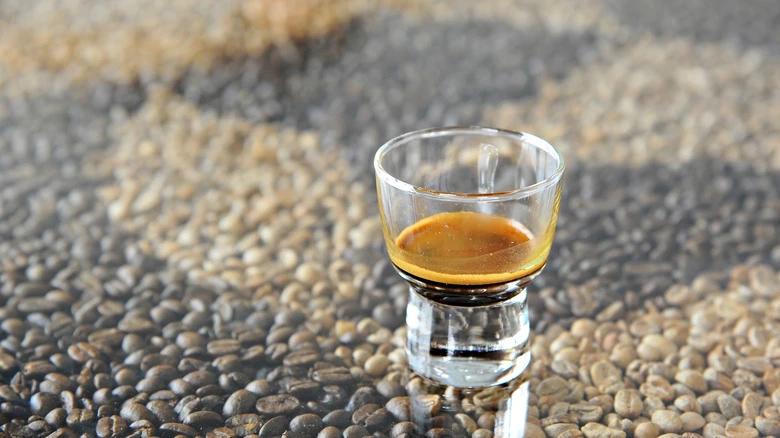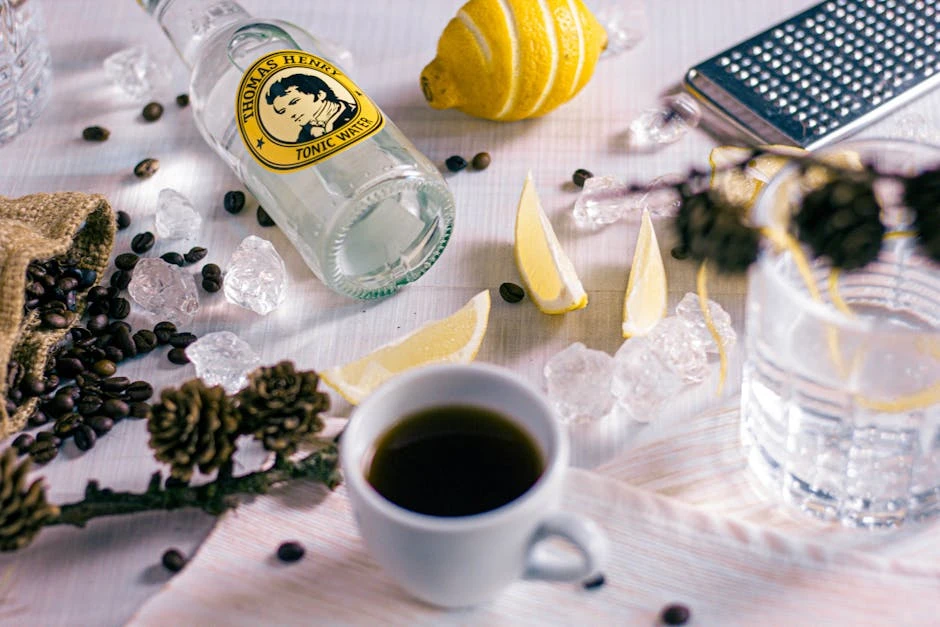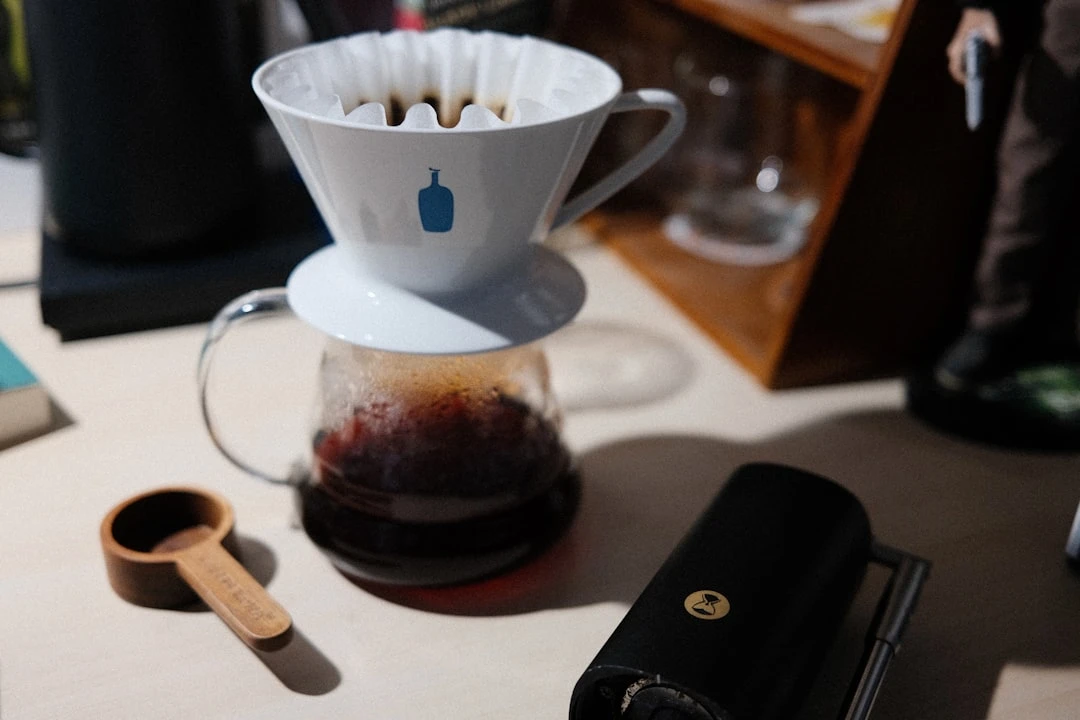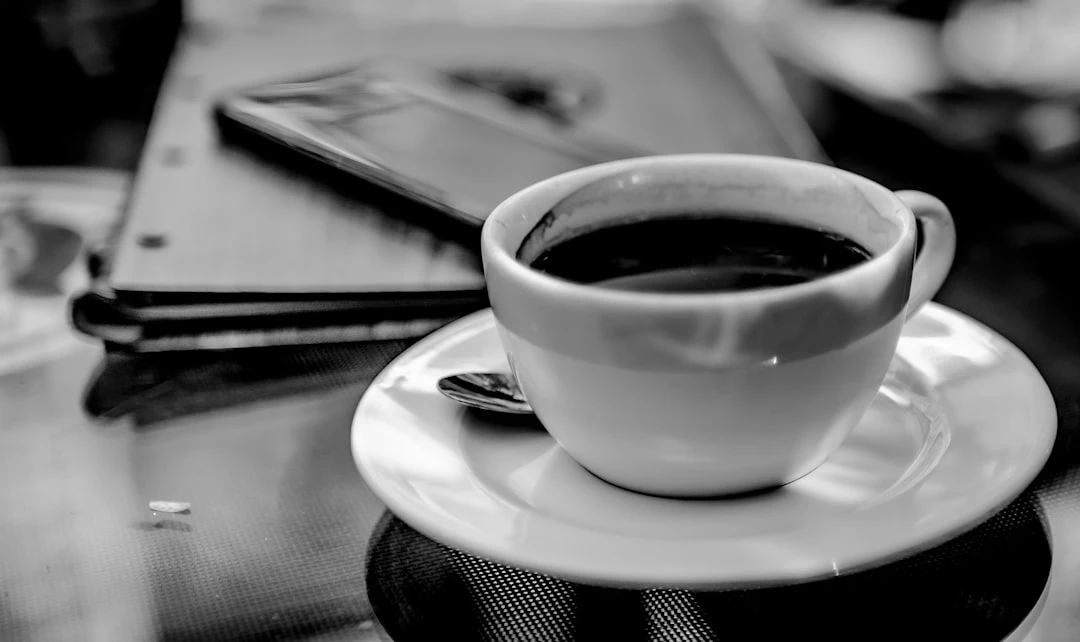Espresso vs Americano: What’s the Difference and Which Should You Choose?
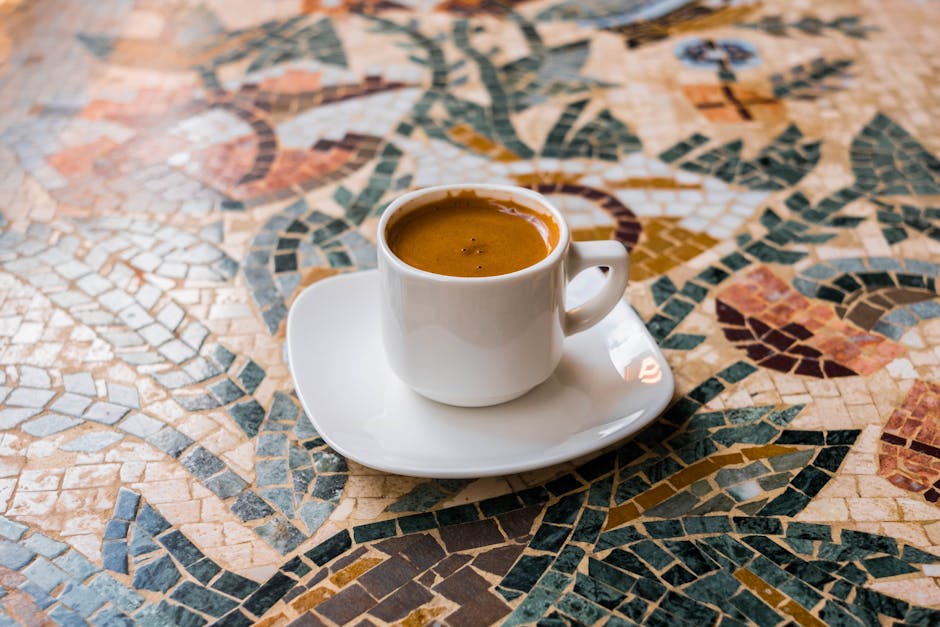
Introduction
Did you know that 64% of Americans drink coffee daily, but most can't actually explain the difference between an espresso and an Americano? I learned this the hard way when I confidently ordered an "Americano with extra shots" at my local café and got the weirdest look from the barista. Talk about embarrassing!
Here's the thing - I thought I knew coffee. I mean, I'd been drinking it for over two decades. But that moment made me realize I was just another coffee drinker who didn't really understand what I was ordering. The difference between espresso and Americano isn't just about adding water (though that's part of it). It's about understanding two completely different coffee experiences that can totally change your morning routine.
Whether you're trying to impress your coffee-snob friend or just want to know what you're actually putting in your mouth every morning, this guide will break down everything you need to know. Trust me, once you understand these differences, you'll never look at your coffee the same way again!
What Is Espresso? (The Foundation of Everything)
Espresso isn't just "strong coffee" like I used to think. It's actually a specific brewing method that creates the foundation for most coffee shop drinks. When I first tried making espresso at home, I quickly realized why baristas make it look so easy - it's definitely not.
The espresso brewing process uses finely ground coffee beans and forces hot water through them at about 9 bars of pressure. This happens in just 25-30 seconds, which sounds quick but requires perfect timing. I can't tell you how many bitter, over-extracted shots I made when I was learning. The grind size has to be just right - too coarse and the water flows too fast, too fine and it barely drips out.
What makes espresso unique is that thick, golden layer on top called crema. It's basically the oils and gases from the coffee beans that get emulsified during the high-pressure brewing. Good crema should be thick enough to hold a spoonful of sugar for a few seconds before it sinks. I learned this trick from an Italian barista who probably thought I was crazy for testing it, but it actually works!
A standard espresso shot is only about 1 ounce of liquid, but it packs a serious flavor punch. The taste should be rich, complex, and slightly sweet with a full body that coats your mouth. When done right, you shouldn't need sugar because the natural sweetness comes through. When done wrong (like my early attempts), it tastes like liquid sadness.
What Is an Americano? (My Gateway Drug to Real Coffee)
An Americano is basically espresso's more approachable cousin. It's made by adding hot water to espresso shots, usually in a 1:2 or 1:3 ratio, depending on how strong you want it. The name supposedly comes from American soldiers during World War II who found European espresso too intense and asked for it to be diluted with hot water. Smart move, honestly.
I discovered Americanos during my college years when I was too broke for fancy coffee drinks but too tired to function without caffeine. The local café charged half the price of a latte, and I could actually taste the coffee instead of just milk and sugar. It was like training wheels for becoming a real coffee drinker.
The beauty of an Americano is that it gives you the complex flavors of espresso but in a more familiar format. It looks like regular drip coffee, comes in a normal-sized cup, and doesn't require you to drink it in three quick sips like a shot of espresso. You can actually savor it and drink it over time without it getting cold and gross.
Making an Americano at home is surprisingly simple once you have decent espresso. Pull your shots directly into a cup with hot water, or add the hot water after - there's actually some debate about which method is "correct," but I've tried both and honestly can't tell much difference. The key is using good water temperature (around 200°F) and not drowning the espresso completely.
Taste Profile Differences (Why Your Palate Matters)
The taste difference between espresso and Americano is like comparing a whiskey shot to whiskey on the rocks. Same basic ingredient, completely different drinking experience. Espresso hits you with concentrated intensity - every flavor note is amplified and happens fast. You taste the original characteristics, the roast level, and any brewing mistakes all at once.
When I first started drinking straight espresso, I could barely handle the intensity. My taste buds weren't trained for that level of coffee flavor. It was like going from listening to music on phone speakers to suddenly wearing high-end headphones - overwhelming but also revealing. You taste things you never noticed before: fruity notes, chocolate undertones, even floral hints depending on the bean origin.
Americanos give you those same flavors but spread them out over a larger volume. The hot water doesn't just dilute the espresso; it actually opens up different flavor compounds and makes them more accessible. I've noticed that some subtle flavors that get lost in straight espresso actually become more noticeable in an Americano. It's weird but true.
The body is totally different, too. Espresso has this syrupy, almost chewy texture that coats your mouth. Americanos have a cleaner, more tea-like body that's easier to drink quickly. Neither is better - they're just different experiences. I drink espresso when I want to really focus on the coffee, and Americanos when I want coffee as part of whatever else I'm doing.
Caffeine Content (The Real Reason We're Here)
Here's where things get interesting and where most people have it completely backwards. A single espresso shot has about 63mg of caffeine, while a typical Americano (made with two shots) has around 126mg. But here's the kicker - regular drip coffee actually has more caffeine per ounce than espresso because of the longer extraction time.
I used to think espresso was the ultimate caffeine bomb because it tastes so strong. Wrong! The intense flavor comes from the concentration and brewing method, not necessarily higher caffeine content. When I switched from drinking large drip coffees to Americanos, I actually got less caffeine but felt more awake because I was paying attention to what I was drinking instead of mindlessly gulping it down.
The caffeine in espresso hits differently, too. Because you're consuming it quickly and in concentrated form, you feel the effects faster. With an Americano, the caffeine absorption is more gradual since you're drinking it over a longer period. This makes Americanos better for sustained energy rather than that quick jolt you get from espresso.
If you're trying to manage your caffeine intake, Americanos give you more control. You can ask for a single shot instead of a double, or even do a "long shot," which is an espresso pulled for a longer time with more water. I discovered this option when I was trying to cut back on afternoon caffeine but still wanted the ritual of drinking coffee.
Brewing Methods and Equipment (Where I Spent Too Much Money)
Making espresso at home requires serious equipment and a learning curve that will test your patience. You need an espresso machine that can generate proper pressure, a good grinder (this is crucial), and the willingness to waste a lot of coffee while you figure it out. I probably spent $500 on my first setup and made terrible coffee for three months straight.
The grinder is honestly more important than the espresso machine. Cheap blade grinders create uneven particles that result in bitter, over-extracted shots. I learned this after wondering why my expensive machine was making worse coffee than the café down the street. A decent burr grinder made more difference than upgrading my machine ever did.
For Americanos, you're still dealing with espresso equipment, but at least you can mask some brewing mistakes with the hot water addition. When I was learning, I made a lot of "accidental Americanos" by pulling shots too long or with the wrong grind size. Adding hot water made them drinkable even when the espresso itself was pretty terrible.
If you don't want to invest in espresso equipment, you can fake an Americano using a Moka pot or AeroPress with strong coffee and hot water. It's not technically an Americano, but it gets you in the ballpark flavor-wise. I actually prefer this method for camping since hauling an espresso machine into the wilderness seems a bit excessive.
When to Choose Each (Based on Hard-Learned Experience)
Choose espresso when you want to really taste the coffee and don't mind the intensity. It's perfect for after meals, when you need quick energy, or when you're trying to appreciate a really good single-origin bean. I drink espresso in the afternoon because it satisfies my coffee craving without filling me up with liquid.
Americanos are my go-to for longer drinking sessions, morning coffee when I'm reading or working, or when I want espresso flavors but need something I can sip slowly. They're also better for showcasing different coffee origins since the dilution lets you pick up subtle flavor notes that might get lost in straight espresso.
If you're new to espresso-based drinks, start with Americanos. They'll train your palate for the more intense espresso experience without overwhelming you. I wish someone had told me this instead of letting me suffer through bitter espresso shots while pretending to enjoy them. There's no shame in working your way up to straight espresso.
Weather plays a role, too. Hot espresso shots are perfect in winter when you want something warming but don't want to commit to a large drink. Americanos work better in warmer weather when you want to drink coffee slowly without it getting cold and nasty. Iced versions of both are game-changers in summer heat.
Common Mistakes (That I Definitely Made)
The biggest mistake people make is thinking espresso is just "strong coffee." It's not about strength - it's about concentration and extraction method. I spent years avoiding espresso because I thought it would be too intense, when really I just needed to understand what I was tasting. Learning to appreciate espresso is like learning to appreciate wine - it takes time and attention.
Another common mistake is making Americanos too weak by adding too much water. The ratio matters! I've had "Americanos" that were basically hot coffee water because someone went overboard with the dilution. Start with a 1:2 ratio (one part espresso to two parts water) and adjust from there based on your taste preferences.
Don't make my mistake of buying cheap equipment and expecting good results. You don't need to spend thousands, but you do need consistent temperature control and proper pressure for espresso. I wasted so much money on "espresso" machines that were basically just high-pressure drip coffee makers. They made coffee, just not espresso.
Temperature is crucial for both drinks. Too hot and you'll scald the espresso, making it bitter. Too cool, and you won't extract properly. I learned to use a thermometer until I could judge water temperature by sight and sound. Most people eyeball it and wonder why their coffee tastes off.
Conclusion
The difference between espresso and Americano isn't just about adding water - it's about choosing the right coffee experience for the moment. Espresso gives you intensity and complexity in a small package, perfect for when you want to really focus on the coffee. Americanos offer those same flavors in a more approachable, sippable format that works better for casual drinking.
My coffee journey taught me that there's no "better" choice between these two drinks. They serve different purposes and satisfy different moods. Some mornings, I want the ritual and focus of a perfect espresso shot. The other day,s I need an Americano I can drink while working without thinking too hard about it.
Remember to consider your caffeine needs, taste preferences, and drinking situation when choosing. And please, don't feel like you have to jump straight into espresso appreciation. Take your time, experiment with ratios, and find what works for your palate and lifestyle.
Have you tried both espresso and Americanos? I'd love to hear about your experiences and which one wins in your daily coffee routine. Drop a comment below and share your coffee story - chances are, we've all made similar mistakes and discoveries along the way!
Related Articles
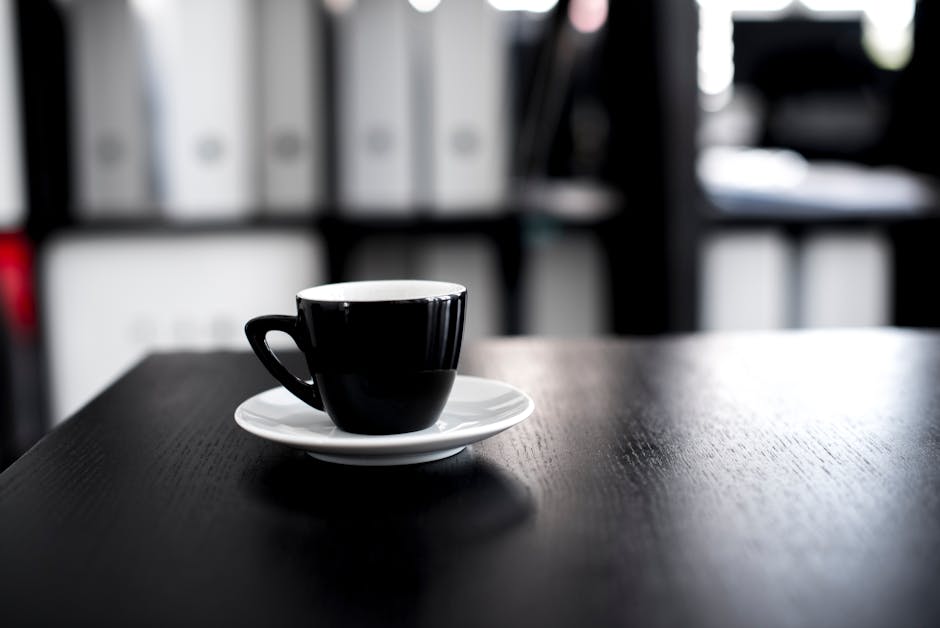
How to Make Perfect Decaf Cold Brew at Home
Read More →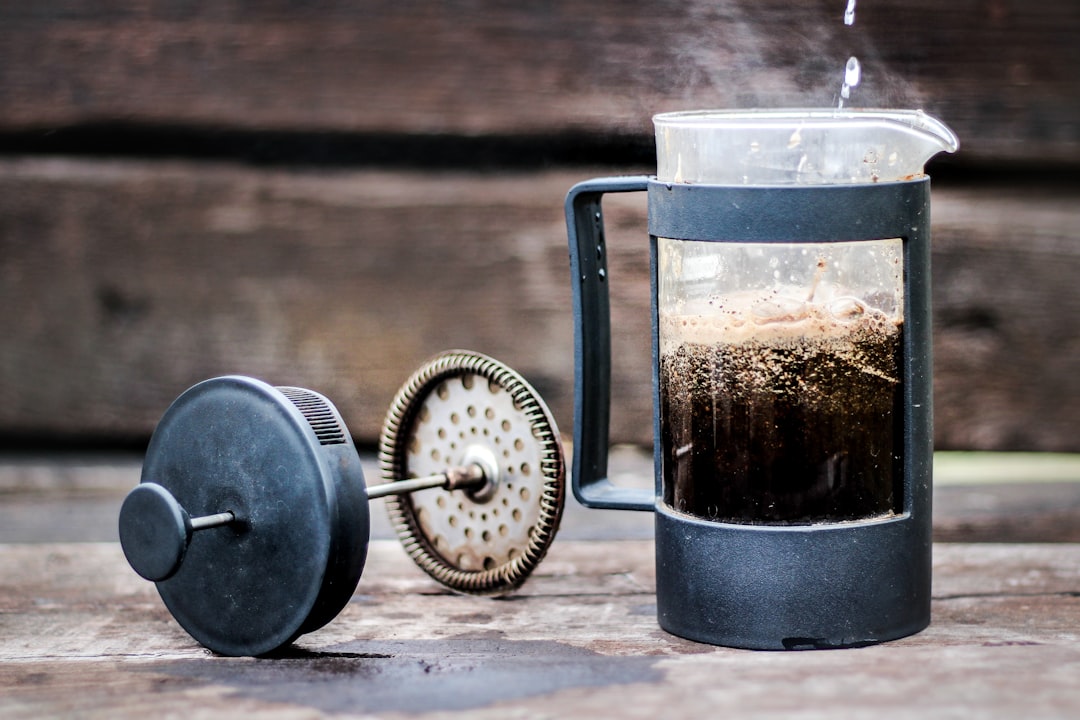
How to Make Cold Brew French Press: Smooth and Rich Coffee at Home
Read More →